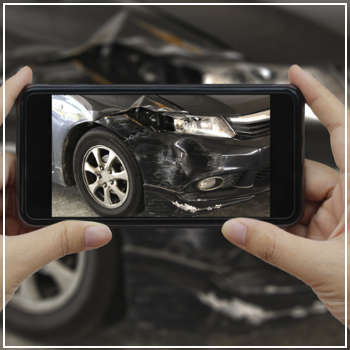 In an ideal situation, auto body shops and insurance companies work together to ensure damaged cars are repaired to road-ready condition. Unfortunately, disagreements can take place that leave customers without their vehicles for longer after an accident.
In an ideal situation, auto body shops and insurance companies work together to ensure damaged cars are repaired to road-ready condition. Unfortunately, disagreements can take place that leave customers without their vehicles for longer after an accident.
At DaSilva’s Auto Body, we never cut corners when it comes to safety. Our technicians use original equipment manufacturer (OEM) parts for repairs and accurately estimate the necessary labor time to make sure your car is safe to drive. What are some of the issues we face with insurance claims?
Disputed Estimates
After an accident, the insurance company will ask you to send a few pictures through their mobile app or an adjuster will come out to assess the car in person. Next, an auto body shop assesses the car with comprehensive, computer-based technology and issues an estimate to the insurance company. Oftentimes, the shop’s estimate is higher because modern technology allows technicians to see internal damage.
Ideally, the insurance carrier adjusts its estimate, understanding not all damage can be seen on the surface, and both parties come to an agreement before repairs begin. Unfortunately, the carrier may cut the driver a check for the initial amount or push back against work they believe is unnecessary. In the meantime, the customer is left on the hook for the remaining balance or without a car until the dispute is settled.
These disagreements often boil down to the total amount an insurance carrier is willing to reimburse a claimant. A carrier may decide to trim costs related to the types of parts used, body shop storage, car rentals and labor.
Replace or Fix Parts
After the assessment, an auto body shop indicates a part should be replaced with an OEM part, per the manufacturer’s standards. On the other side, the insurance carrier will pay to fix the damaged part, rather than replacing it. In this case, the auto body shop must prove the damaged part is unsalvageable and should be replaced with a comparable model.
OEM vs. Aftermarket Parts
Although aftermarket parts have some benefits, their quality compared to OEM is very uneven. For this reason, more auto body shops are opting to complete repairs with OEM parts. While more costly, OEMs are replicas of your vehicle’s existing part, meet the manufacturer’s standards and are usually covered under warranty.
Strictly looking at price, some insurance carriers try to push auto body shops toward the aftermarket variety, refurbished or salvaged parts. Even if the carrier agrees to OEM parts, a customer may have to make up the cost difference, depending on what their policy specifies. Find out if your carrier excludes OEM parts and thoroughly review your repair estimate after the assessment.
Length and Labor
During the auto body assessment, it’s determined what repairs are necessary and how long they will take to complete. In response, an insurance carrier may request the auto body shop complete the job in less time for less money. A carrier may further dispute the shop’s per-hour labor rate if it’s above what it wants to pay out.
Joining a Direct Repair Program
In recent years, auto body shops have debated joining an insurer’s network of repair shops. Membership guarantees a steady flow of customers, but when a shop requests more labor, OEM parts or anything greater than what the carrier is willing to pay, work is sent to the competitors. Furthermore, many shops now have to foot the bill for liability issues that may arise from their repairs.
In extreme cases, a CNN report found that a carrier’s heavy-duty cost-cutting measures at DRP shops lead to parts held in place with glue and repairs done with cracked, junkyard-quality parts that harm damaged vehicles even further.
At DaSilva’s Auto Body, we not only pride ourselves on the quality of our work, but also our commitment to customer service, including the resolution of issues with insurance carriers. We partner with local insurance agents for a smoother, more streamlined claims process. To request an appointment for regular maintenance or repairs, contact us today.




